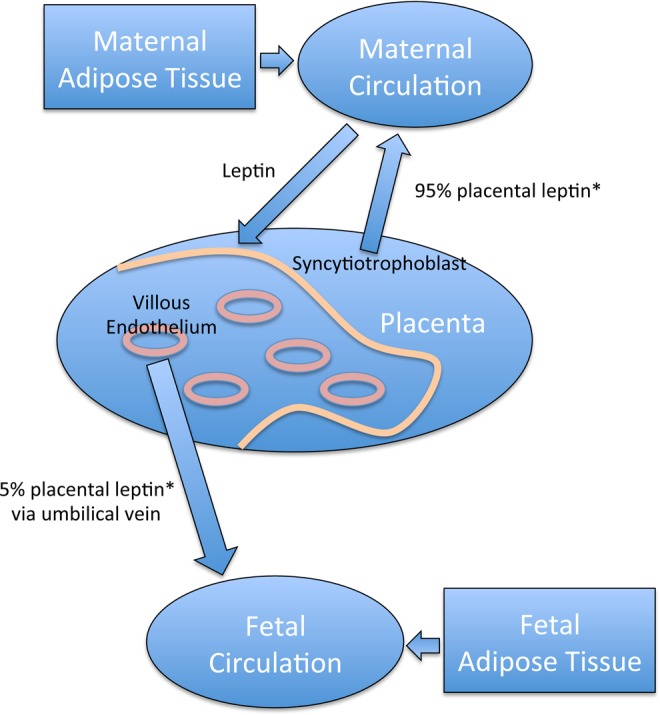Figure 4.

Possible relationships between maternal, placental, and fetal leptin. Placental leptin from the syncytiotrophoblast contributes 95% to the maternal circulation, while leptin from the villous endothelial cells contributes 5% to the fetal circulation. Maternal adipose tissue also secretes leptin that contributes to the maternal circulation and can target the placental trophoblast. Fetal adipose tissue contributes leptin to the fetal circulation. Placental leptin from the villous vascular endothelium shown in our study to be increased in obese women is secreted into the umbilical vein, where leptin levels were also higher. This would add to the fetal leptin levels and may directly affect fetal growth and development. * indicates reference 25.
